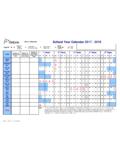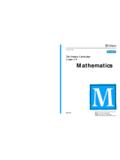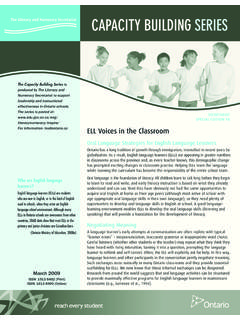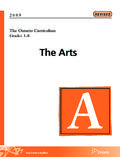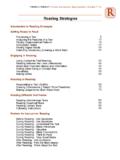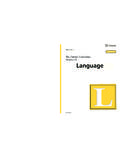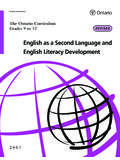Transcription of Effective Educational Practices for Students with Autism ...
1 Effective Educational Practices FOR Students with Autism spectrum DISORDERSA RESOURCE GUIDE2007 ABOUT THIS Autism spectrum Disorders .. 10 About Autism spectrum Disorders .. 10 Terminology .. 11 ASD .. 12 Causes of ASD .. 13 Prevalence of ASD .. 14 Diagnosis of ASD .. 14 Characteristics of Students with ASD .. 15 Program Planning .. 18 Parent Involvement .. 18 Individual Learning Profile .. 22 Assessment .. 24 The Individual Education Plan (IEP) .. 28 Collaborative Planning .. 31 Universal Design for Learning .. 33 Planning for Transitions .. AND LEARNING39 Instructional Strategies .. 40 Differentiated Instruction .. 40 Visual Supports .. 42 Structured Learning Environment .. 45 Assistive Technology .. 47 CONTENTSUne publication quivalente est disponible en fran ais sous le titre suivant :Pratiques p dagogiquesefficaces pour les l ves atteints de troubles du spectre publication is available on the Ministry of Education s website, at Considerations.
2 49 Applied Behaviour Analysis (ABA) .. 52 Teaching Students with ASD .. 59 Literacy Skills .. 60 Mathematics .. 64 Homework .. AND BEHAVIOUR69 Behaviour Management .. 70 Managing Challenging Behaviour .. 70 Successful Practices for Behaviour Management .. 72 Communication .. 79 Communication Challenges Associated with ASD .. 79 Strategies to Develop and Enhance Communication Skills .. 81 Social Skills .. 89 The Development of Social Skills for Students with ASD .. 89 The Fundamentals of Social Skill Instruction .. 93 Strategies to Facilitate Social Understanding .. 98 About Asperger s Disorder .. 102 Challenges Associated with Asperger s Disorder .. 102 Strategies to Develop and Enhance Student Skills .. AND TECHNIQUES109 APPENDICESA ppendix A:Glossary .. 208 Appendix B:Resources .. 209 Appendix C:References.
3 211As educators, we share a deep commitment to ensuringthat every student has the opportunity to succeed andachieve to his or her highest potential. In developing thisguide, the Ministry of Education acknowledges the valuablework being done in schools and classrooms across Ontario,and the dedication of teachers throughout the province tocreating a learning environment that supports the success of every You Will Find in This GuideThis resource guide is designed to support educators in elementaryand secondary schools in Ontario in planning and implementingeffective Educational programs for Students with Autism SpectrumDisorders (ASD). It contains information, strategies, and practicesthat can be put to use in the school and the classroom. It alsoincludes a collection of sample materials reflecting current Practices in schools, as well as lists of references and resources for further Educational Practices for Students with Autism SpectrumDisorders (ASD)includes the following elements: Foundations:General information about the diagnosis of ASD, characteristics of individuals with the disorder, andkey principles for planning Effective Educational programsfor Students with ASDABOUTTHISGUIDE Teaching and Learning: Strategies and Practices that have been found to be Effective for Students with ASD Communication and Behaviour:Strategies and tech-niques for addressing challenging behaviour, and improvingcommunication and social skills Tools & Techniques.
4 Sample materials that represent themost Effective current Practices , collected from school boardsand regional Autism service provider agencies across Ontario. Reference Materials:A glossary and lists of helpful resourceson ASD, including publications and websites, as well as children s the Most from This GuideEffective Educational Practices for Students with Autism SpectrumDisorders (ASD)is designed as a practical reference you can useevery day. In order to get the most out of this guide, you maywish to read it first in its entirety. Then, you can refer back tospecific chapters or sections, or select from the various samplesprovided in Chapter 4, Tools and Techniques . As you explore the suggestions and tools provided in this guide, keep in mind thatit is important to adapt them to the specific needs of the student,classroom, and school.
5 Effective Educational Practices for Students with ASD4 Look for These Text FeaturesTo make this guide as useful as possible, the following symbolshave been designed to highlight key features within the FOR TEACHERSFor quick reference on strategies that have been found to beeffectiveTOOLS & TECHNIQUESFrom Ontario school boards and regional Autism serviceprovider agenciesINSIGHTFor deepening your understanding of ASDKEY FACTSFor consideration in planning programs for Students with ASDRESOURCESFor additional information and further studyDeepening Your KnowledgeIn recent years a wealth of information and resource materials has been developed regarding the education of Students with resource guide is not intended as a complete or comprehen-sive source of information, but has been developed to provideexamples of Practices that have been found to be Effective .
6 Educatorswho are seeking additional information for further investigationson the topic of educating Students with ASD are encouraged toconsult the references and resources listed in the appendices ofthis guide, and to monitor the growing body of knowledge onthis This Guide 5 Why This Guide Was DevelopedThe Ontario Ministry of Education has undertaken a number of initiatives to support school boards, school authorities, andprovincial/demonstration schools in teaching Students with September 2003, the ministry organized a conference onteaching Students with Autism , in partnership with the AutismSociety of Ontario (now Autism Ontario), the Geneva Centre forAutism, the Council of Ontario Directors of Education, and theCouncil for Exceptional Children. Following the conference, theministry worked with Ontario school boards to provide regionalforums, in French and English, for educators working directlywith Students with Autism at the school level to further exploreprogramming and Effective teaching 2004, the School Support Program Autism SpectrumDisorder (SSP ASD) was established through a partnershipbetween the Ministry of Children and Youth Services and theMinistry of Education, school boards, and designated communityagencies.
7 The SSP ASD is administered by nine lead Autism serviceprovider agencies. Through this program, ASD consultants areconnected with school boards to work with school staff teachers,principals, and others who interact with children to help themaddress the needs of Students with complement the services available through the Autism serviceprovider agencies, the ministry funded Geneva Centre for Autismto provide training opportunities in the 2006-2007 and 2007-2008school years for teachers assistants (TAs) who work or may workwith Students with fall 2006, the Ministers Autism spectrum Disorders ReferenceGroup was established to provide advice to the Minister ofEducation and the Minister of Children and Youth Services on Effective , evidence-based Educational Practices to meet thewide range of needs of Students with ASD. The reference groupincluded practitioners, researchers, parent representatives, andrepresentatives from the francophone community who were Effective Educational Practices for Students with ASD6selected for their expertise and professional and personal experi-ence with children, youth, and young adults with ASD.
8 A reportwith recommendations from the reference group Making aDifference for Students with Autism spectrum Disorders in OntarioSchools: From Evidence to Action was prepared for the ministers,and in spring 2007 the report was distributed to school support of the recommendations of the reference group, inMay 2007 the ministry released Policy/Program MemorandumNo. 140, Incorporating Methods of Applied Behaviour Analysis(ABA) into Programs for Students with Autism SpectrumDisorders (ASD) , 2007. Regional training sessions were offered to board teams to clarify the expectations in the build on all of the previous initiatives, the ministry has developed this resource guide as another step to support schoolboards in the education of Students with ASD in elementary and secondary This Guide 7 AcknowledgementThe Ministry of Education acknowledges the contributions of resources and information from Ontario school boards, theGeneva Centre for Autism , and the regional Autism serviceprovider agencies that deliver the School Support Program Autism spectrum Disorder, which were invaluable in the creation of this spectrum Disorders (ASD) are complex neurological disorders that have a lifelong effect on thedevelopment of various abilities and skills.
9 Helping studentsto achieve to their highest potential requires both an under-standing of ASD and its characteristics, and the elements of successful program planning required to address THIS CHAPTERU nderstanding Autism spectrum DisordersAbout Autism spectrum Disorders10 Terminology11 ASD12 Causes of ASD13 Prevalence of ASD14 Diagnosis of ASD14 Characteristics of Students with ASD15 Program PlanningParent Involvement18 Individual Learning Profile22 Assessment 24 The Individual Education Plan (IEP)28 Collaborative Planning31 Universal Design for Learning33 Planning for Transitions361 FOUNDATIONSKEY FACTSA bout Autism spectrum DisordersAutism spectrum Disorders (ASD) are complex neurologicaldisorders that have a lifelong effect on the development ofvarious abilities and skills.
10 ASD is characterized by impairments incommunication and social interaction, as well as unusual patternsof behaviours, interests, and term spectrum is used to recognize a range of disorders thatinclude a continuum of developmental severity. The symptomsof ASD can range from mild to severe impairments in several areasof development. Many professionals in the medical, Educational ,and vocational fields are still discovering how ASD affects peopleand how to work effectively with individuals with ABOUT ASDTHE FACTSASD is is not rare. It affects approximately 1 in every 165 persons(Fombonne et al., 2006).ASD is an emotional is a neurological parenting causes do not cause ASD in is a cure for ASD, or childrenwill grow out of the do not grow out of ASD. with early intervention and goodeducational programs, Students may make significant with ASD behaves in thesame with ASD are individualswho each have unique strengthsand with ASD have to be inspecial programs for the autistic .
